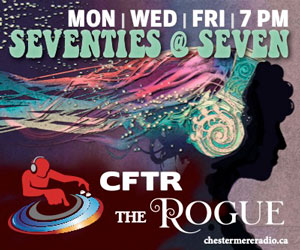Your intrepid liquor reporter was out on one of those newfangled Internet dates last week, and ended up in a snooty French restaurant with a young lady of very recent acquaintance.
Those blind dates can be intimidating, what with trying to remember the name of your date, avoiding menu items heavy in garlic or gas-producing ingredients, and then there is the traditional running of the gauntlet of the wine list.
Yes, gentle reader, even the seasoned wine snobs like your humble narrator can be perplexed by a long and complicated wine list, and this snooty French restaurant seemed to be competing with War and Peace in terms of the sheer size of their wine list, making any decision a daunting one.
To make matters worse, nearly all the wines were French, making the labels indecipherable for all but the most enthusiastic French wine buffs.
Faithful readers may recall that the so-called Old World wine countries of Europe label their wines according to appellation, while New World wines are labeled according to varietal.
Roughly translated, this means that a French wine label will tell you the village the wine was made in, but not the type of wine in the bottle. The same wine from an Australian producer will tell you the type of wine in the bottle, but not the specific village it was made in.
Yes, gentle reader, those stuffy French winemakers think that their wine is so good that you should just know what kind of grapes they grow in the village listed on the label, and if you don’t already know that, maybe you are not the type of lowbrow plebian they want to be drinking their wine anyway.
Your long-suffering liquor reporter was navigating the byzantine twists and turns in a seemingly endless wine list, when I came across a nice bottle of Sancerre that would pair well with the Salmon Crème Fraîche my date was eyeing on the menu.
For those who do not spend their time memorizing the details of every wine appellation in France, Sancerre is a wine growing region located in the Loire Valley, at nearly the exact centre of France, whose major plantings are of Sauvignon Blanc.
Indeed, the Sancerre region has been producing wines since the Roman empire made plantings there in the 1st century, and has remained popular for the subsequent two millenia.
Centuries ago, the Sancerre region was planted mainly with Pinot Noir and Gamay grapes, but they were wiped out during the Phylloxera epidemic of the 1860s that decimated most of the great vineyards of Europe.
The phylloxera louse was eventually beaten by grafting European grapevines onto hardy American rootstocks, and it was at this time that the red grape plantings in Sancerre were replaced almost entirely with Sauvignon Blanc.
Most of the vineyards of Sancerre are planted on south-facing slopes, which allows for extended sun exposure for full ripeness, as well as good soil drainage to avoid rot.
The high concentrations of flint and chalk in the soil lend a minerality to the flavour of the wines of Sancerre, which may also help with the uncommonly long ageing potential of these wines.
The Sauvignon Blanc wines produced in Sancerre tend to be very dry, with a heady perfumed aroma on the nose, followed by rich flavours of peach and gooseberry on the palate.
Some of the so-called New World wine countries have strived to emulate the flavours of Sancerre, with a notable example being the brashly named Cat’s Pee On A Gooseberry Bush Sauvignon Blanc from New Zealand.
Your humble narrator has not figured out if that name makes the wine more or less attractive to the crazy cat ladies of the world, but I am sure someone is performing a study right now.
The Sauvignon Blanc wines from the Sancerre region are famous for being food-friendly, which is why your budding lothario of a booze blogger ordered it for my blind date, with confidence that it would impress her so much that she would be nudging me for breakfast the following morning.
The flinty mineral characters of Sancerre wines provide a more complex structure than the fruit-forward Sauvignon Blanc of the New World wine regions, which is surely one of the reasons it pairs so well with different foods.
Seafoods, soft cheeses, and even mushroom pizza will pair will with a Sauvignon Blanc from Sancerre, so try one with your next meal!








